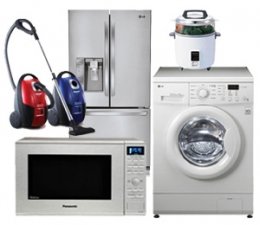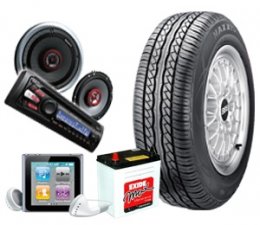SCALES
Weighing scales (weigh scales, scales, etc.) are devices to measure weight or calculate mass. Spring balances or spring scales measure weight (force) by balancing the force due to gravity against the force on a spring, whereas a balance or pair of scales using a balance beam compares masses by balancing the weight due to the mass of an object against the weight of a known mass or masses. Either type can be calibrated to read in units of force (weight) such as Newtons, or in units of mass such as kilograms, but the balance or pair of scales using a traditional balance beam to compare masses will read correctly for mass even if moved to a place with a different (non-zero) gravitational field strength (but would then not read correctly if calibrated in units of force), while the spring balance would read correctly in force in a different gravitational field strength (but would not read correctly if calibrated in units of mass).
Background
The traditional bathroom scale is used to measure a person's body weight. It is based on a spring system that uses the weight of the person to depress a lever, which in turn rotates a sprocket attached to the dial. The dial rotates until it stops, and a plastic marker marks the person's weight. A home-use bathroom scale has a margin of error of ±0.25 lb (±0.12 kg). Scales for bathrooms or kitchens are generally designed as spring balances.
History
Units of measurements have been used for all of antiquity. People have always used some type of set standard for trade. The first known measurement device was used by the Romans 2,000 years ago. They devised an equal beam scale which was shaped like the letter T with both arms measuring 7.4 in (18.8 cm) wide. Attached to each arm were metal pans that were typically 1.5 in (4 cm) in diameter.
The first known unit of weight was the wheat seed. The ancient Romans and Greeks used this standard to measure any other object against, generally for barter or trade. For instance, farmers would bring their crops to sell and they would be weighed against the known standard of wheat grain. X-amount of produce was equal to X-amount of grain needed to maintain the equilibrium of the balance. The Arabs improved on these techniques and established weight standards for gold, silver, and gems.
By the thirteenth century trade had become much more widespread, but people in different parts of the world (or even within the same country) used different standards of measurement. King Edward I of England established a base standard of measurement to which objects or materials could be compared to. This standard soon traveled through trade and became somewhat acceptable in other parts of the world.
In 1793, the French government devised a system based on a line running along the ground through Paris that measured the distance from the North Pole to the Equator. The French called this the metric system. People were unfamiliar with this system and it was not fully enforced until 1837 when it became the standard in European countries.
Scales themselves continued to evolve to meet both the distributor and customer's needs. Customer's wanted to be able to count on the accuracy of the distributor's scales to make sure that they were not being cheated. The first scales used a simple balance beam to weigh an object against a known standard.
The first spring balance was brought into widespread use in the eighteenth century. In Bilston, England Richard Salter began making what is today known as a fisherman's scale which used a spring balance to measure weight. The Salter brand was also the first company in England to marked bathroom scales. Modern home scales have evolved from these early industrial prototypes. Today, the scale is based on the same spring balance idea.
Although records dating to the 1600s refer to spring scales for measuring weight, the earliest design for such a device dates to 1770 and credits Richard Salter, an early scale-maker. Spring scales came into common usage in 1840 when R. W. Winfield developed the candlestick scale for use in measuring letters and packages. Postal workers could work more quickly with spring scales than balance scales because they could be read instantaneously and did not have to be carefully balanced with each measurement.
By the 1940s various electronic devices were being attached to these designs to make readings more accurate. Load cells, small nodes that convert pressure (or force) to a digital signal, have their beginnings as early as the late-nineteenth century, but it was not until the late-twentieth century that they became accurate enough for widespread usage.
Digital bathroom scale
Digital Bathroom Scale is a type of electronic weighing machine, which is used to measure many readings including body fat, BMI, lean mass, muscle mass, water ratio along with body weight. The digital bathroom scale is a smart scale which has many functionalities like smartphone integration, cloud storage, fitness tracking, etc.
Strain gauge scale
In electronic versions of spring scales, the deflection of a beam supporting the unknown weight is measured using a strain gauge, which is a length-sensitive electrical resistance. The capacity of such devices is only limited by the resistance of the beam to deflection. The results from several supporting locations may be added electronically, so this technique is suitable for determining the weight of very heavy objects, such as trucks and rail cars, and is used in a modern weighbridge.
Supermarket/retail scale
These scales are used in the bakery, grocery, delicatessen, seafood, meat, produce and other perishable goods departments. Supermarket scales can print labels and receipts, mark weight/count, unit price, total price and in some cases tare. Some modern supermarket scales print an RFID tag that can be used to track the item for tampering or returns. Weighting scale in retail saves time inputting a lot of product information using management program entering every menu mode using short cut keys. In most cases these types of scales have a sealed calibration so that the reading on the display is correct and cannot be tampered with. In the USA the scales are certified by the National Conference on Weights and Measures' NTEP, in South Africa by the South African Bureau of Standards and in the UK by the International Organization of Legal Metrology.
Mechanical
Spring scales
A spring scale measures weight by reporting the distance that a spring deflects under a load. This contrasts to a balance, which compares the torque on the arm due to a sample weight to the torque on the arm due to a standard reference weight using a horizontal lever. Spring scales measure force, which is the tension force of constraint acting on an object, opposing the local force of gravity. They are usually calibrated so that measured force translates to mass at earth's gravity. The object to be weighed can be simply hung from the spring or set on a pivot and bearing platform.
In a spring scale, the spring either stretches (as in a hanging scale in the produce department of a grocery store) or compresses (as in a simple bathroom scale). By Hooke's law, every spring has a proportionality constant that relates how hard it is pulled to how far it stretches. Weighing scales use a spring with a known spring constant (see Hooke's law) and measure the displacement of the spring by any variety of mechanisms to produce an estimate of the gravitational force applied by the object. Rack and pinion mechanisms are often used to convert the linear spring motion to a dial reading.
Spring scales have two sources of error that balances do not: the measured weight varies with the strength of the local gravitational force (by as much as 0.5% at different locations on Earth), and the elasticity of the measurement spring can vary slightly with temperature. With proper manufacturing and setup, however, spring scales can be rated as legal for commerce. To remove the temperature error, a commerce-legal spring scale must either have temperature-compensated springs or be used at a fairly constant temperature. To eliminate the effect of gravity variations, a commerce-legal spring scale must be calibrated where it is used.
Hydraulic or pneumatic scale.
It is also common in high-capacity applications such as crane scales to use hydraulic force to sense weight. The test force is applied to a piston or diaphragm and transmitted through hydraulic lines to a dial indicator based on a Bourdon tube or electronic sensor.
Raw Materials
The case of the spring scale is manufactured from stainless steel or aluminum. The interior is composed of metal springs, pins, gears, and plastic. The gears can be made from aluminum, copper, brass, bronze, stainless, steel, nickel silver, monel, zinc, iron, or plastic. The non-slip mat is formed from a mix of poly vinyl chloride and rubber.
Design
There are many different types of scales; solar, electronic, digital, and spring to name a few. The scales may also differ on what they measure. Some scales are able to measure a person's body fat ratio. The color and size of scales vary greatly to meet all customer needs.
A typical spring scale is comprised of weight transmitting levers, a weight sensing mechanism, and dial enclosed in a metal casing. Generally, the scale is equipped with a non-slip pad on the platform so that the person does not slip and fall off the scale.
For quality home and industrial scales, check our store today. We stock the best for your delight.







